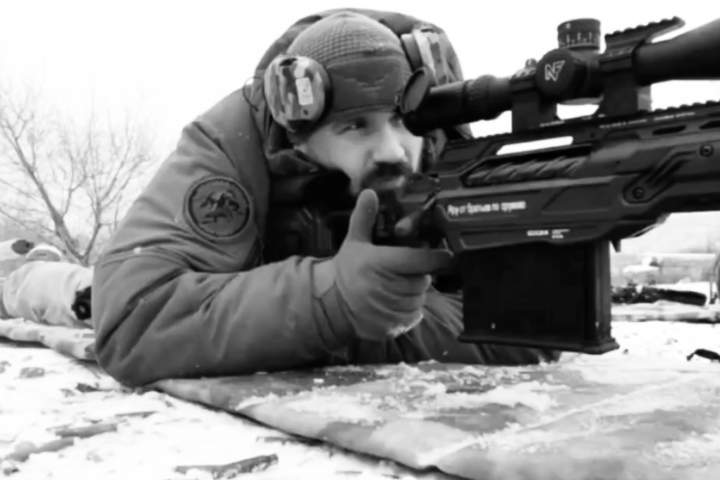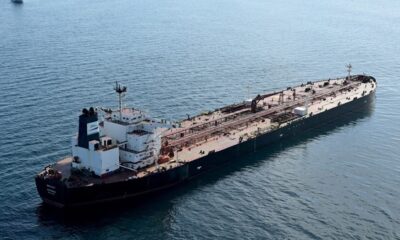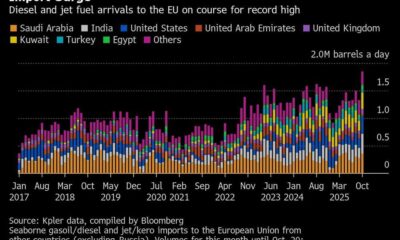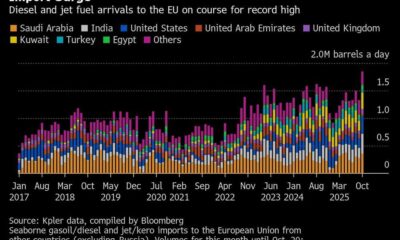Politics
Russian Forces Use Canadian-Made Rifles Despite Export Ban

The presence of Canadian-made rifles in Russia raises significant concerns about sanctions enforcement. Despite a ban on military exports to Russia, images and reports reveal that Russian snipers are using firearms manufactured by Cadex Defence, a company based in Quebec. This situation highlights ongoing challenges in the international arms trade, particularly in the context of the conflict in Ukraine.
Photographs circulating on Russian social media depict snipers armed with Cadex rifles, including a decorated Russian major known for his role in the ongoing conflict. One notable figure, identified by the call sign Yary, has been credited with 600 kills during combat. He now serves as an instructor at the Combat Sniping Federation, which trains sharpshooters for operations in Ukraine. A video posted on Telegram last year showcases Yary firing a Cadex rifle, underscoring the weapon’s use in active warfare.
In addition to Yary, another sniper, known as Nemets, was recently spotted posing with a Cadex rifle in a social media post. Furthermore, various Cadex models were displayed at the OrelExpo 2025 gun show held in Moscow from October 2 to 5, indicating the rifles’ availability in the Russian market. A local gun dealer, Varyag, has also listed several Cadex rifles for sale on its website, despite the company’s stated policy against exporting to Russia.
Serge Dextraze, president of Cadex Defence, expressed his dismay upon discovering that Russian forces are utilizing his company’s products. He noted that the source of these rifles remains unclear, stating, “I was very upset.” Following inquiries about rifles listed in Russian customs documents, he took immediate action by blacklisting the U.S. purchaser linked to those sales.
The issue of Canadian firearms appearing in Russian hands is not unique to Cadex. Many firearms manufacturers face similar challenges, as arms often change hands numerous times before reaching their final destination. Sergey Panov, an exiled Russian journalist, indicated that while Cadex rifles are present, they are less prevalent than American and European brands, which are favored by Russian special forces.
Despite stringent sanctions imposed by Canada and its allies since February 2022, enforcement remains a significant hurdle. Global Affairs Canada has indicated that no direct exports to Russia have occurred since 2015. Still, Panov argues that this does not address the problem of arms resold through third countries, which often evade scrutiny. Countries like Italy, Kyrgyzstan, and Kazakhstan have been identified as transit points for these weapons.
The Ukrainian Canadian Congress has called for a thorough investigation into the situation, describing it as a “shocking revelation.” CEO Ihor Michalchyshyn emphasized the need for stronger sanctions and better enforcement mechanisms to prevent Canadian weapons from being used against Ukraine.
As the conflict continues, the implications of this arms flow are profound. The ability of Russian forces to acquire high-precision rifles such as those made by Cadex reflects a broader issue within international arms control. Dextraze acknowledged this reality, stating, “These guys are able to get anything from anywhere,” underscoring the difficulties faced by manufacturers striving to comply with export regulations.
While Cadex Defence remains committed to adhering to Canadian laws, the complexity of the global arms trade poses challenges that extend beyond the control of individual manufacturers. The ongoing conflict in Ukraine and the involvement of foreign firearms only highlight the urgent need for comprehensive solutions to address sanctions evasion and the illicit arms trade.
-

 World3 months ago
World3 months agoScientists Unearth Ancient Antarctic Ice to Unlock Climate Secrets
-

 Entertainment4 months ago
Entertainment4 months agoTrump and McCormick to Announce $70 Billion Energy Investments
-

 Lifestyle3 months ago
Lifestyle3 months agoTransLink Launches Food Truck Program to Boost Revenue in Vancouver
-

 Science4 months ago
Science4 months agoFour Astronauts Return to Earth After International Space Station Mission
-

 Technology2 months ago
Technology2 months agoApple Notes Enhances Functionality with Markdown Support in macOS 26
-

 Top Stories3 weeks ago
Top Stories3 weeks agoUrgent Update: Fatal Crash on Highway 99 Claims Life of Pitt Meadows Man
-

 Sports4 months ago
Sports4 months agoSearch Underway for Missing Hunter Amid Hokkaido Bear Emergency
-

 Politics3 months ago
Politics3 months agoUkrainian Tennis Star Elina Svitolina Faces Death Threats Online
-

 Technology4 months ago
Technology4 months agoFrosthaven Launches Early Access on July 31, 2025
-

 Politics3 months ago
Politics3 months agoCarney Engages First Nations Leaders at Development Law Summit
-

 Entertainment3 months ago
Entertainment3 months agoCalgary Theatre Troupe Revives Magic at Winnipeg Fringe Festival
-

 Top Stories6 days ago
Top Stories6 days agoFamily Remembers Beverley Rowbotham 25 Years After Murder





















